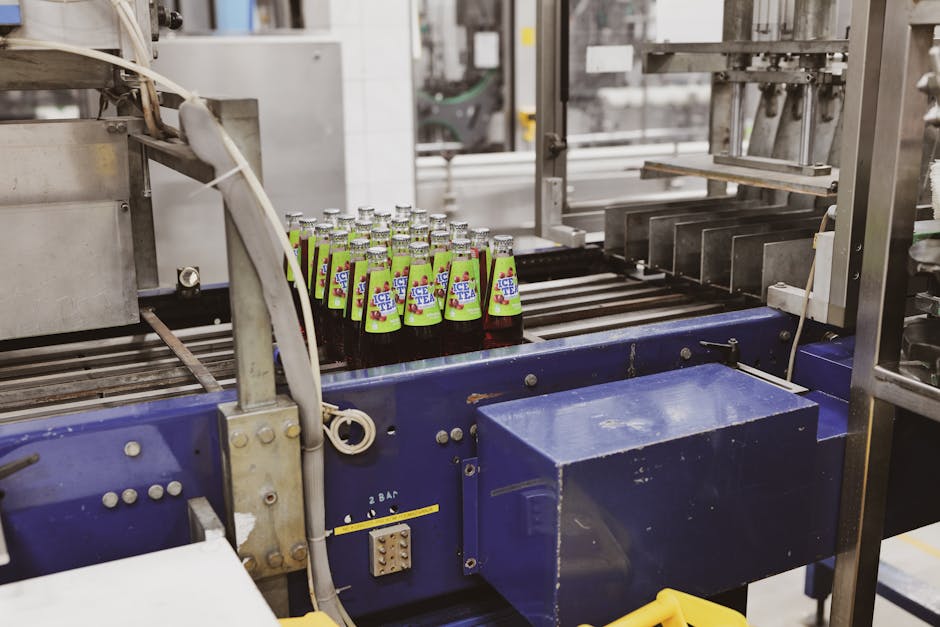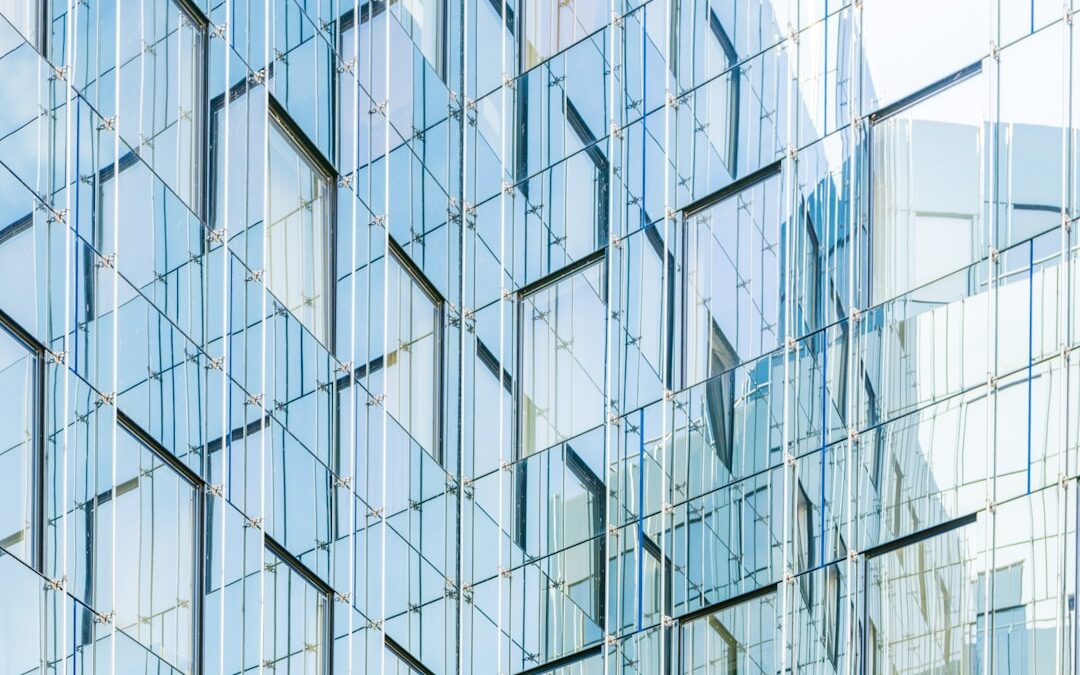Tempered Glass: Top 5 Incredible Benefits in 2024
Tempered glass, a type of safety glass also known as toughened glass, is renowned for its strength and durability. It’s four to five times stronger than regular glass, making it ideal for areas that require extra safety and resilience. If you’re looking for a reliable and robust option for your home or business glass needs, tempered glass may be the perfect choice.
Quick Facts About Tempered Glass
– Strength and Safety: Shatters into small, dull pieces, reducing injury risk.
– Durability: Resistant to impacts, scratches, and chemicals.
– Heat Resistance: Suitable for high-heat applications.
– Clarity: Offers clear visibility for optimal usage.
At Vista Glass, we understand the importance of quality and safety. Tempered glass is a staple in our product offerings due to its superior properties and essential role across various applications, from residential to industrial settings.
My name is Rich Main, and I’ve been immersed in the glass industry for much of my life. Having founded Vista Glass, I leverage over two decades of experience to ensure each tempered glass product meets high standards for safety and excellence.

Tempered glass definitions:
– tinted window glass for house
– window glass house
What is Tempered Glass?
Tempered glass, often called safety glass or toughened glass, is a type of glass that has undergone specific processes to improve its strength and safety. But how does it become so strong? Let’s explore the manufacturing process and the unique properties that make tempered glass stand out.
Manufacturing Process
The creation of tempered glass involves a fascinating procedure known as thermal tempering. This process starts with extreme heating. The glass is heated to around 1200°F, a temperature where it becomes pliable but not molten.
Once the glass reaches this critical temperature, it undergoes rapid cooling or quenching. This involves blasting the glass with cool air, causing the outer surfaces to cool and harden faster than the inner layers. This rapid cooling creates a state of tension inside the glass and compression on the surface, making it significantly stronger than regular glass.

But there’s more than one way to strengthen glass. An alternative method, known as chemical tempering, involves submerging the glass in a potassium salt bath. This process is less common but can produce even stronger glass.
Properties
Tempered glass is renowned for its strength and safety. Thanks to the manufacturing process, it’s up to four times stronger than standard glass. This makes it an excellent choice for applications where durability is crucial, such as in car windows and shower doors.
One of the standout safety features of tempered glass is how it shatters. Unlike regular glass, which breaks into sharp, jagged shards, tempered glass shatters into small, dull pieces. This significantly reduces the risk of injury, making it a preferred option for safety-conscious installations.
The internal tension and surface compression give tempered glass its remarkable properties. This balance between tension and compression not only contributes to its strength but also makes it resistant to thermal stress and impact.

In summary, tempered glass is a marvel of engineering, offering a perfect blend of strength, safety, and durability. Its unique manufacturing process and properties make it an indispensable material for a wide range of applications, from residential to industrial settings.
Now, let’s explore the benefits of tempered glass and why it’s such a popular choice for various uses.
Benefits of Tempered Glass
Safety
One of the most compelling benefits of tempered glass is its improved safety features. Unlike regular glass, when tempered glass breaks, it shatters into small, dull pieces. This drastically reduces the risk of injury from sharp shards, making it a top choice for areas where safety is a priority. This property is why it’s often referred to as safety glass.
Durability
Tempered glass is incredibly durable. It can withstand significant pressure and impact, making it ideal for high-contact surfaces. Its resistance to abrasion and chemical exposure ensures it remains intact in challenging environments. This durability makes it perfect for everything from car windows to protective safety guards in industrial settings.
Heat Resistance
Another standout feature of tempered glass is its ability to withstand high temperatures. It’s commonly used in industrial equipment, like furnace windows, where heat resistance is crucial. This makes it a valuable material in both residential and commercial applications that require exposure to high-heat conditions.
Clarity
Despite its strength, tempered glass maintains excellent clarity. This ensures optimal visibility, which is essential for applications like observation windows in laboratories or machinery. Its ability to remain clear and distortion-free makes it a preferred choice for both functional and aesthetic purposes.
Versatility
The versatility of tempered glass is best. It is used in a wide array of applications, from architectural features such as glass doors and partitions to consumer products like shower doors and kitchen appliances. Its combination of strength, safety, and clarity makes it suitable for both residential and industrial applications, proving its adaptability across various industries.
Tempered glass stands out for its combination of safety, durability, heat resistance, clarity, and versatility. These benefits make it an indispensable material for a myriad of uses, ensuring both safety and performance in every application.
Common Uses of Tempered Glass
Tempered glass is everywhere, from our homes to our workplaces, and even in industrial settings. Its unique properties make it suitable for a wide range of applications. Let’s explore some of the most common uses:
Residential Applications
In homes, tempered glass is a staple for safety and style. Shower doors made of tempered glass not only add a sleek look to bathrooms but also ensure safety by minimizing injury risk if broken. Glass tables in dining and living areas bring an neat touch while offering durability against daily wear and tear.
When it comes to fireplace doors, tempered glass is the go-to choice. It’s robust enough to withstand moderate heat, making it ideal for fireplace enclosures. Kitchen appliances like oven doors also benefit from tempered glass, providing clear visibility and resistance to high temperatures.
Commercial Applications
In commercial spaces, tempered glass is key to creating modern and functional environments. Architectural glass doors and partitions use tempered glass for its strength and clarity, enhancing both aesthetics and safety. Display cases in retail settings rely on tempered glass to protect merchandise while maintaining optimal visibility.
Elevators often feature glass walls made from tempered glass, offering a sophisticated look and ensuring passenger safety through its shatter-resistant properties. This use underscores the importance of tempered glass in high-traffic and high-contact areas.
Industrial Applications
In industrial settings, the resilience of tempered glass is crucial. High-pressure windows and explosion-proof windows use tempered glass for its ability to withstand extreme conditions, ensuring safety and integrity in demanding environments.
Safety guards and protective shields for machinery often incorporate tempered glass, providing a transparent barrier that protects workers without compromising visibility. Additionally, lab equipment like observation windows and covers benefit from the glass’s heat and chemical resistance, making it indispensable in laboratory settings.
Tempered glass’s diverse applications highlight its adaptability and essential role in ensuring safety and functionality across various sectors.
Disadvantages of Tempered Glass
While tempered glass is celebrated for its strength and safety, it’s not without its drawbacks. Let’s explore some of the challenges associated with this material:
Security Concerns
One of the primary concerns with tempered glass is its tendency to shatter upon impact. Unlike regular glass that breaks into sharp shards, tempered glass crumbles into small, dull pieces. While this reduces injury risk, it can pose a security risk. The glass’s ability to shatter easily means that intruders can break through more effortlessly, potentially gaining access to secured areas.
Resizing and Cutting
Tempered glass must be cut and shaped before undergoing the tempering process. Once tempered, it becomes extremely fragile to any resizing or cutting attempts. This post-tempering fragility means any adjustments must be made beforehand, limiting flexibility in customization. If changes are needed after tempering, the glass is likely to shatter, requiring a complete replacement.
Spontaneous Breakage
A unique challenge with tempered glass is its potential for spontaneous breakage. This can occur without warning, often due to internal factors like nickel sulfide inclusions. These tiny impurities can expand over time, creating stress within the glass that may lead to sudden breakage.
External factors also contribute to this phenomenon. Thermal stress from temperature fluctuations or installation damage like nicked edges can initiate cracks that grow over time. Such vulnerabilities highlight the importance of careful handling and installation to minimize these risks.
Understanding these disadvantages is crucial for making informed decisions about using tempered glass in various applications, balancing its benefits with potential challenges.
Tempered Glass vs. Alternatives
When considering glass options, weigh the pros and cons of tempered glass against its alternatives, like window film and laminated glass.
Window Film
Window film is a valuable alternative to tempered glass. These films are made of multi-layer materials that improve the protective capabilities of glass surfaces. They are especially effective in holding glass shards together if the window is damaged, preventing harm and slowing down forced entry. This makes them a cost-effective solution for improving safety without replacing the entire glass structure.
In addition to safety, window films can offer UV protection and reduce glare, making them a popular choice for residential and commercial applications. They are also easy to install and can be applied to existing glass, making them a flexible option for many situations.
Laminated Glass
Laminated glass offers another alternative, known for its shatter-resistant properties. It consists of two pieces of glass bonded together with a plastic interlayer. This construction helps hold the glass fragments in place if broken, reducing the risk of injury from flying debris.
Beyond safety, laminated glass provides excellent sound-deadening qualities, making it ideal for environments where noise reduction is essential, such as offices and homes near busy streets. It also offers UV protection, helping to prevent furniture and interior fading.
Both window film and laminated glass provide unique benefits that can make them preferable to tempered glass in certain scenarios. Whether you prioritize cost-effectiveness, improved safety, or additional features like noise reduction, these alternatives offer valuable solutions custom to specific needs.
Frequently Asked Questions about Tempered Glass
Is tempered glass unbreakable?
No, tempered glass is not unbreakable. While it is about four times stronger than regular glass due to its heat-treated process, it can still break under significant force. The key advantage of tempered glass is that when it does break, it shatters into small, dull pieces, reducing the risk of injury. This feature makes it a popular choice for many safety applications, like car windows and shower doors.
What are the pros and cons of tempered glass?
Pros:
- Safety: When broken, it shatters into small, rounded pieces, minimizing injury risk.
- Strength: It’s much stronger than regular glass, making it more resistant to impacts and pressure.
- Heat Resistance: Ideal for high-temperature environments, such as fireplace doors and certain kitchen appliances.
- Clarity: Provides excellent visibility, making it suitable for observation windows and other applications where clarity is essential.
Cons:
- Security Risk: Despite its strength, once broken, it shatters completely, which could be a security concern in certain situations.
- Resizing Limitations: It cannot be re-cut or reshaped after the tempering process, necessitating precise initial measurements.
- Spontaneous Breakage: There is a rare risk of spontaneous glass breakage due to internal defects like nickel sulfide inclusions or thermal stress.
What’s the difference between tempered and regular glass?
Tempered glass and regular glass, also known as annealed glass, differ primarily in strength and safety features.
- Strength: Tempered glass is significantly stronger due to the thermal tempering process, which involves heating the glass to over 1,000 degrees Fahrenheit and then rapidly cooling it. This creates a state of tension inside and compression on the surface, enhancing its durability.
- Safety: When broken, tempered glass shatters into small, less harmful pieces, unlike regular glass, which breaks into sharp, jagged shards that can cause serious injuries.
- Applications: Due to its improved safety and strength, tempered glass is commonly used in situations where safety is a priority, like in car windows and shower doors, whereas regular glass might be used in less hazardous settings.
Understanding these differences can help you decide which type of glass is best suited for your specific needs, whether it’s for safety, strength, or other considerations.
Conclusion
In conclusion, tempered glass stands out as a remarkable material due to its unique blend of safety, durability, and versatility. At Vista Glass, we recognize these benefits and offer comprehensive solutions for both residential and commercial applications.
Safety is a paramount advantage of tempered glass. Its ability to shatter into small, dull pieces minimizes injury risk, making it an ideal choice for environments where safety is critical. This property is why you’ll often find it in car windows, shower doors, and other areas where human interaction is frequent.
Durability is another key benefit. Thanks to its heat-treated process, tempered glass is significantly stronger than regular glass. It can withstand higher pressures and impacts, which makes it suitable for demanding environments like industrial settings or areas with high foot traffic.
Moreover, tempered glass offers excellent heat resistance, allowing it to perform well in high-temperature environments. This makes it a popular option for kitchen appliances and fireplace doors, where both safety and performance are essential.
Finally, the versatility of tempered glass cannot be overstated. Whether it’s used in architectural features, consumer products, or industrial applications, its strength and clarity ensure it meets a wide range of needs. From glass tables in homes to protective safety guards in machinery, the applications are vast and varied.
At Vista Glass, with over 25 years of experience, we are committed to meeting your glass needs with our expert services. Explore our offerings and find out how we can help you achieve the perfect glass solution for your project by visiting our glass services page.
Whether you’re looking for safety, strength, or versatility, tempered glass is a solid choice that delivers on all fronts.

